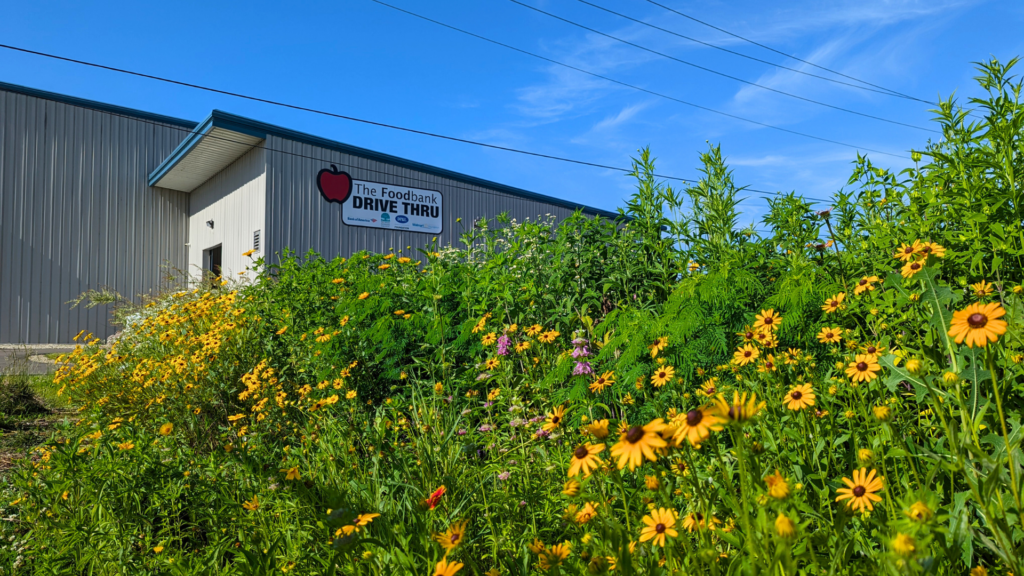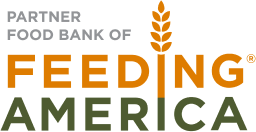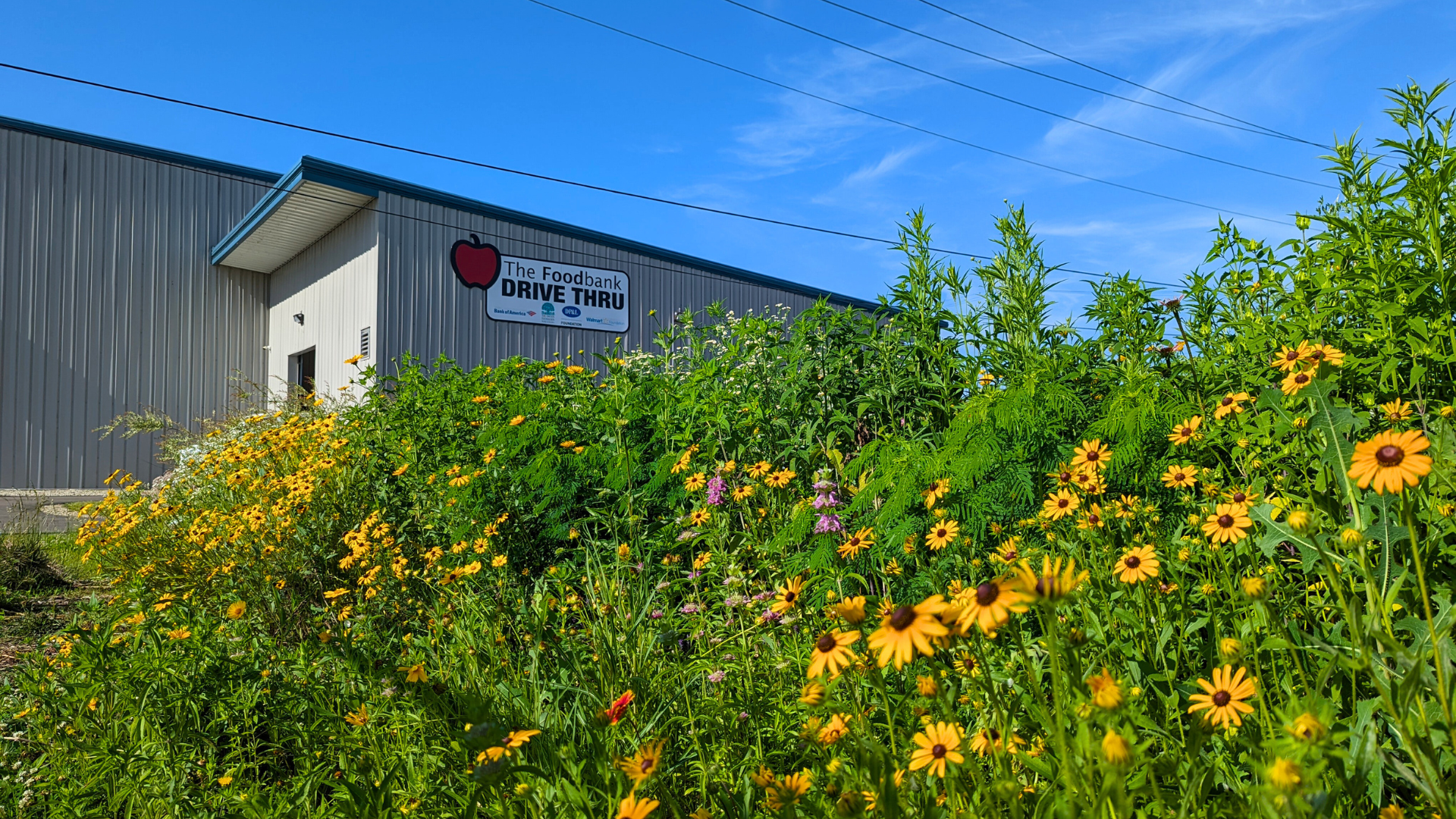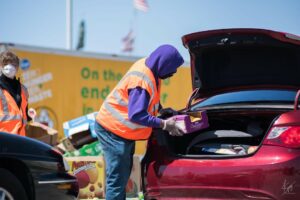10 Things You Might Not Know About The Foodbank’s Urban Garden
By Mary Beringer, Grant Coordinator
Spring has sprung in Dayton, and The Foodbank, Inc.’s urban garden is in full swing, growing lots of food that will be distributed to our neighbors throughout the Miami Valley. We talk about our garden a lot- you’ve seen the pictures, you know about our Greenehouse, but here’s 10 things you might not know:
1. The Foodbank Garden has been growing strong for seven years.
Originally a series of dirt-filled milk crates behind our West Dayton warehouse, The Foodbank’s garden was inspired by a simple idea: What if we could get our neighbors fresher food, grown specifically for them, and also beautify Dayton at the same time? We created our first urban garden in response. In 2017 we upgraded to raised beds, greenhouses, and more, and we’ve been growing ever since.
2. We harvest between 8,000 and 10,000 pounds of produce from our raised beds every year.
Our garden started small, but we keep adding new crops and new fixtures, all of which have led us to a point where we’re growing at least 8,000 pounds of produce every year, and all of it goes directly to our neighbors. This year, we’re growing garlic, tomatoes, okra, carrots, squash, peppers, onions, and more.
3. We have grown over 50,000 heads of lettuce in our hydroponic greenhouse.
The Beverly K. Greenehouse has 9,300 growing spots, which we rotate through to maintain optimum conditions. While some spots are just being seeded, others are almost ready to harvest, and still others are being cleaned. This means that there are almost always heads of lettuce we can pick and hand out the same day in our Wednesday Drive-Thru distributions.
4. Our garden features native plants, and for a good reason.
Surrounding the urban garden are patches of native plants, including wildflowers, grasses, and trees. These make for beautiful pictures when they’re blooming, but that’s not the only reason we planted them. Native plants attract native species, like pollinators that help our garden grow. Native plants also have a tendency towards deeper, larger root systems. This is important because lots of roots means a plot of land is more resistant to erosion. Native plants promote biodiversity, which makes our whole garden more resistant to disease and disaster.
5. A lot of what we grow is what our neighbors have requested.
The non-native plants in our garden have been carefully selected, not just based on what will grow well, but also based on what our neighbors like to eat. Okra, rosemary, collard greens, and hot peppers are just some of the foods we added to the urban garden at the request of our neighbors. These plants are culturally significant to a lot of people in our community, and everyone should have access to the foods that are important to them. What produce would you like to see in our garden?
6. The sunflowers have a purpose.
You may have seen the beautiful pictures of sunflowers in our garden that pop up every summer, but did you know they’re good for more than just looking pretty, or being a seedy snack? These tall, bright yellow flowers offer shade for some of the more delicate plants in our garden- we all know
how intense the Ohio sun can get in the summer. They also attract friendly birds, who eat bugs that might hurt our crops.
7. Companion planting helps keep our garden efficient.
There’s more than one way to plant a garden, and our team knows all the tricks of the trade! We utilize companion planting in our urban garden. Companion planting is the technique of planting different crops close together, so they can help and support each other as they grow. For example, we plant our tomatoes and onions near each other, because the smell of onions disorients pests that might try to eat the tomatoes.
8. Some bugs are welcome at The Foodbank.
To keep our produce fresh and healthy for all our neighbors, we don’t use chemical pesticides in our garden. Our team uses other methods to keep the bad bugs away, including… more bugs! When there are pests on our plants that might damage the crop, we bring in helper insects, like ladybugs and praying mantises, that will eat the bad bugs while leaving our produce alone. Don’t worry, there’s no bugs- good or bad -on the food that goes out to our neighbors.
9. The garden team are composting champions.
Since October 2019, over 200,000 pounds of food waste has been diverted from landfills and turned into compost by our garden team. 71,341 pounds of that total came from our compost bucket program, which has been running since May 2021. All that composting prevented 533.09 tons of carbon dioxide from entering the atmosphere, which is the equivalent of 115 passenger vehicles being driven for one year.
10. Urban gardens are good for more than just your dinner plate.
Of course, the biggest benefit of The Foodbank’s urban garden is the food we are able to distribute to neighbors, but there are several other wonderful outcomes. Because we grow the food right next to where we distribute it, there is less transportation involved in the production of these plants, which means fewer emissions that could harm the environment. Also, most of our produce is picked and distributed within a couple of days, often the very same day. This means the fruits and veggies aren’t spending a lot of time lingering on a grocery store shelf, losing nutrients. Fresh food is more nutritious food.
Now is the perfect time to volunteer in our urban garden. Be a part of something beautiful, good for you, and good for your community.





No comment yet, add your voice below!